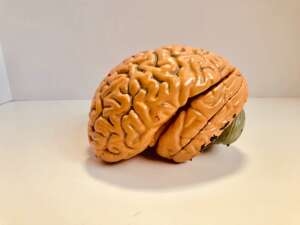
A FEW FACTS ABOUT YOUR BRAIN:
- The brain weighs about 3 lbs, which is ~ 2% of total body weight. Einstein’s brain weighed about 2.7 lbs. But as we get older, the brain loses about 1 gram per year
- The brain consists of 86 billion nerve cells (neurons). Neurons continue to grow throughout life, but those cells that serve a function that is no longer being used die (a process called pruning), hence the saying “if you don’t use it, you lose it”.
- The brain can be divided into 4 main sections called lobes (the name of each lobe indicates where it is located): Frontal lobe (front of the brain), Parietal lobe (middle of the brain ), temporal lobe (side of the brain), occipital lobe (back of the brain).
- The brain is 60% fat (fatty acids). Essential fatty acids are crucial to maintain brain health; however since the body cannot synthesize them, they must be obtained from dietary sources.
- There are no pain receptors inside the brain, so the brain itself cannot feel pain it can only process pain from the body.
- The brain is a high consumer of energy, it uses 20 % of our body’s total energy (oxygen and caloric intake), and so it must always be nourished appropriately to function adequately.
“LEFT” BRAIN VS “RIGHT” BRAIN IS A METAPHOR
- The notion that the left brain is rational while the right brain is creative is actually based on a metaphor,; it was never to be taken literally.
- The reason being that the brain functions as a single unit, not as distinctive parts with their own unique functions. Indeed, the brain is a network of neurons that communicate with one another from various parts of the brain.
- Think about it, if brain functions were strictly localized, then someone with a stroke for example in the left side of the brain would never be able to speak again!
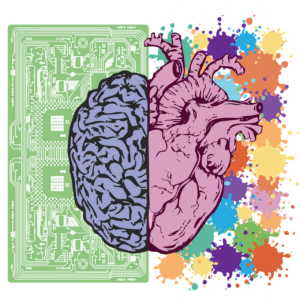
THERE IS NO SUCH THING AS A LIMBIC SYSTEM DEDICATED TO EMOTION PROCESSING
What is erroneously called “limbic system” actually refers to limbic circuitry, which is associated with many vital functions including the autonomic system, immune system, and endocrine system.
Emotion processing is only one of many other contributions of those neurons, as they connect to various brain structures from the amygdala to the cerebral cortex.
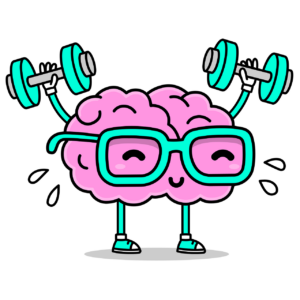
THE BRAIN IS NOT FOR THINKING:
- The brain’s most important job is not emotion, rationality or imagination; it is to keep you alive and well by controlling and managing your energy budget.
- Called allostasis, body budgeting requires the brain to predict the amount of energy needed based on past actions.
- To paraphrase neuroscientist Dr. Lisa Feldman Barret “Everything your brain creates, from memories to hallucinations, from ecstasy to shame, is part of this [body budgeting] mission.”
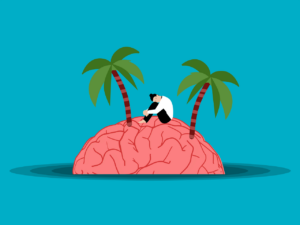
THE PROFOUND IMPACT OF STRESS ON THE BRAIN
Stress is an integral part of our lives, and while some level of stress can be beneficial, excessive and chronic stress can have a detrimental impact on our overall well-being, particularly on the brain. Recent scientific research has shed light on the profound effects of stress on the brain, unveiling a complex interplay between our emotions, cognition, and neural pathways. This article aims to explore the various ways in which stress impacts the brain, supported by relevant scientific sources.
Structural Changes in the Brain:
Chronic stress has been found to lead to structural alterations in the brain, particularly in areas associated with memory, learning, and emotional regulation. Studies have shown that prolonged exposure to stress hormones, such as cortisol, can result in the remodeling of neural connections, shrinking of the hippocampus (a key region for memory), and enlargement of the amygdala (involved in emotional processing).
Impaired Cognitive Function:
Stress has a significant impact on cognitive function, affecting our ability to concentrate, make decisions, and solve problems. Research indicates that high levels of stress can impair working memory, attention, and executive functions. Additionally, chronic stress has been linked to a higher risk of cognitive decline and neurodegenerative diseases later in life.
Emotional Disturbances:
Stress influences our emotional well-being, often leading to mood disorders such as anxiety and depression. Chronic stress disrupts the balance of neurotransmitters and hormones in the brain, altering emotional regulation processes. The excessive activation of the amygdala and weakened prefrontal cortex connectivity contribute to emotional dysregulation and increased vulnerability to mental health disorders.
Neuroplasticity and Neural Resilience:
Although chronic stress can have negative effects, the brain also possesses remarkable resilience and the ability to adapt. The concept of neuroplasticity highlights the brain’s capacity to reorganize and form new neural connections, even in the face of stress. Engaging in stress-reducing activities, such as mindfulness, exercise, and social support, can promote neuroplasticity and enhance neural resilience.
Thus, understanding the impact of stress on the brain is crucial for promoting mental well-being and developing effective stress management strategies. The scientific evidence presented highlights the profound effects of chronic stress on brain structure, cognitive function, and emotional health. By recognizing the detrimental consequences of stress and implementing stress-reducing techniques, we can protect our brain health and cultivate resilience in the face of life’s challenges.
References:
McEwen, B. S. (2012). Brain on stress: How the social environment gets under the skin.
Lupien, S. J., et al. (2009). Effects of stress throughout the lifespan on the brain, behaviour and cognition.
Arnsten, A. F. (2009). Stress signalling pathways that impair prefrontal cortex structure and function.
Russo, S. J., et al. (2012). Neurobiology of resilience.
Note: The sources mentioned above are provided as examples and may not represent an exhaustive list of all relevant research on the topic. It is always recommended to consult scientific literature and scholarly sources for a comprehensive understanding

SHUT OFF YOUR BRAIN BEFORE SLEEP
Racing thoughts contribute to inability to fall asleep at night, although other factors could be involved as well including caffeine, medication, and other mental health issues, just to name a few
Here are a few practices that can gently help your mind to slow down:
TURN OFF ALL YOUR SCREENS:
The blue light from your screen interferes with your circadian rhythm by fooling the brain into thinking it is still daylight
LOWER THE BRIGHTNESS AND CONTRAST ON YOUR TV SCREEN:
Watching TV at night can be helpful for some in falling asleep, so lowering the brightness and contrast on your screen can make it easier on the eyes and the brain.
TRY RELAXATION/BREATHING EXERCISES:
Relaxation exercises might help you release tension and fall asleep soundly. Progressive muscle relaxation for example involves tensing muscles and then releasing them, starting with your facial muscles and moving down toward your toes. You can also try to breathe deeply but slowly. Counting your inhalations and exhalations can help you focus on the sensation of breathing and take your mind off of other thoughts.
SOAK YOUR BODY:
Nothing beats a warm bath or a leisure shower to release the tension and relax the body. When your body feels warm, your mind tends to slow down as well.
WRITE “IFs” DOWN:
Too much to think about? write it down on a notepad or a piece of paper so that it is ‘literally” out of your head.
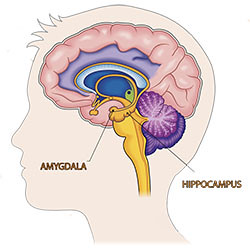
THE ROLE OF THE AMYGDALA IN ANXIETY DISORDERS
In general, the amygdala exhibits a broader response to emotionally arousing stimuli, but it tends to be preferentially and consistently activated in the presence of potential threats. This observation underscores the amygdala’s crucial role in mediating fear and anxiety states. Notably, recent research has proposed the existence of distinct fear and anxiety systems within the amygdala, each regulated by separate pathways in its nuclei.
Investigations into extinction, a process where a previously learned behavior associated with a specific stimulus (e.g., jumping at the sight of a furry animal) ceases to be triggered by that same stimulus (e.g., not jumping at the sight of a furry animal), reveal insights into the heightened fear, anxiety, and distress experienced by individuals with anxiety disorders.
In anxiety disorders, those emotions fail to extinguish even when the stimuli are no longer threatening. This phenomenon is exemplified in conditions like post-traumatic stress disorder (PTSD), where impaired extinction contributes to the enduring emotional responses despite the absence of ongoing threats.
Quick Reviews of the literature:
PTSD: Functional neuroimaging studies in PTSD report that the amygdala is hyperresponsive, while the ventral portions (front) of the medial prefrontal cortex are hyporesponsive, and more interestingly resilience to PTSD may be associated with relatively decreased amygdala responsiveness.
Panic Disorder: Several studies have consistently provided evidence of amygdala and brain stem hyper-responsivity in panic disorder. Furthermore, a PET study(Positron Emission Tomography) found greater resting glucose metabolism in the amygdala (a sign that the amygdala was very active in the absence of stimuli).
Social Phobia: Exaggerated amygdala activation has been faithfully observed in social phobia during public speaking, the anticipation of public speaking, negative comments, and even neutral faces.
Specific Phobia: The amygdala, dorsal (back) anterior cingulate cortex, and insular cortex appear to be hyperactivated in the presence of phobia-related stimuli. However, these abnormalities tend to disappear with successful treatment.
Generalized Anxiety Disorder: There are no consistent results about what brain regions are hyperactive in GAD.
References:
Shin, L. M., & Liberzon, I. (2010). The neurocircuitry of fear, stress, and anxiety disorders. Neuropsychopharmacology, 35(1), 169-191. doi:10.1038/npp.2009.83
